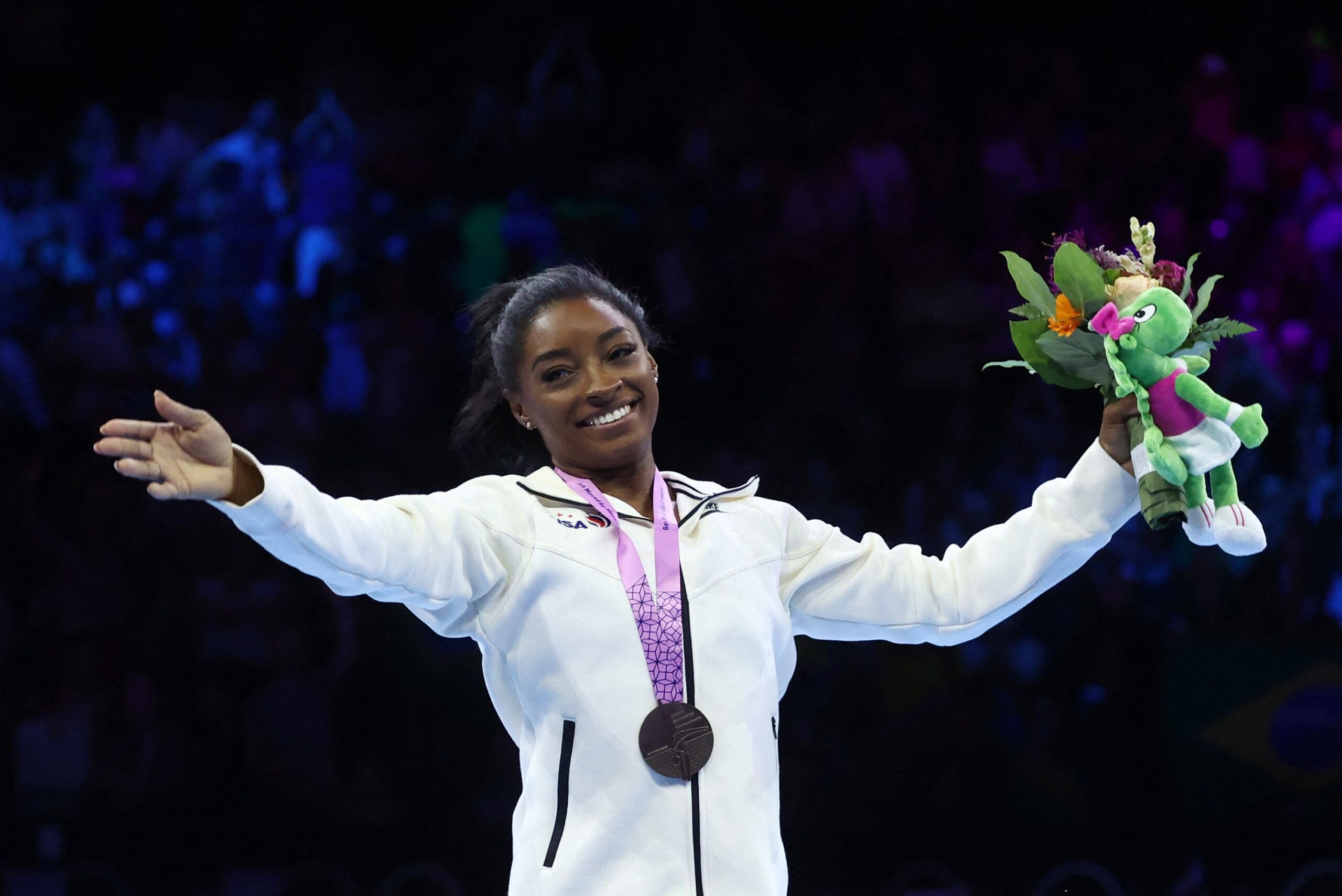
(CNN) — Gymnastics, in many ways, is a mirage-like display of power and athleticism coupled with elegance and beauty, a perfect exterior of twisting shapes concealing the extraordinary efforts beneath.
It was an image of the sport’s most successful athletes too until Simone Biles began to remodel it two years ago at the Tokyo Olympics, an unintended consequence of pulling out of several events suffering from what is known as the “twisties” – a mental block causing a gymnast to lose track of their positions midair.
The most successful gymnast of her time had shown her fallibility on the biggest stage of all, and as she completed a history-making comeback at the World Artistic Gymnastics Championships last week, she completed refashioning those expectations of success.
By returning to the world stage in such emphatic style, Biles reimagined that image of a model athlete into someone who can land unprecedented skills at the highest level and is open about her own mental health, someone who is older than traditionally successful gymnasts but still defining her sport.
The mirage of the performance remains but, with the backstage efforts required to conjure it more visible, it is a more complex, and arguably more impressive, image.
Records as well as medals announced Biles’ return to the pinnacle of the sport in Antwerp, Belgium.
She became the first woman to land the Yurchenko double pike vault at an international competition, ensuring that it will now be named the Biles II in her honor, and became the most decorated male or female gymnast ever, surpassing Belarusian Vitaly Scherbo’s record of 33 overall medals across both the Olympics and the world championships.
She won four gold medals during the world championships too – in the team, all-around, beam and floor competitions – as well as a silver medal in the vault. In her weakest discipline – the uneven bars finals – she finished fifth.
Five months ago, Biles didn’t think she’d ever compete again, she said on X, formerly known as Twitter.
She had taken a two-year break from the sport after Tokyo to focus on her mental health. During that time, Biles has been open about re-evaluating her relationship to gymnastics, “going to therapy, making sure everything is aligned so that I can do the best in the gym and be a good wife, good daughter, good friend, all of the good things,” as she told NBC in September.
Nevertheless, ghosts from Tokyo still lingered at the world championships, she said afterwards, memories bubbling to the surface and making her “nervous” for the team finals on Wednesday.
“That’s when everything occurred, so I was a little bit traumatized from that,” she said on Friday, according to the official Olympics website.
Returning to the international stage in Antwerp provided a neat bookend for her career to date, a fitting place to re-establish herself as the world’s best gymnast as it was in Antwerp that Biles first announced herself on the world stage 10 years ago, winning her first all-around world title as a precocious 16-year-old, as well as a gold, silver and bronze medal in the floor, vault and beam respectively.
“I’m very proud,” she said on her return to Antwerp. “Especially after the year I had after Tokyo, coming back and just being comfortable and confident in my routines. I couldn’t ask for more,” she told BBC Sport.
Now, attention turns to Paris. Biles has already said that competing at next year’s Paris Olympics is a “a path I would love to go (down),” and returning to the biggest stage of all would add yet another dimension to her already remarkable legacy.

